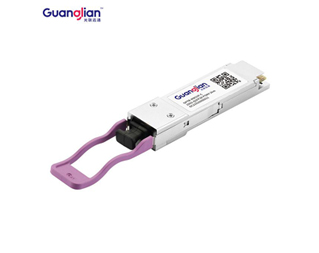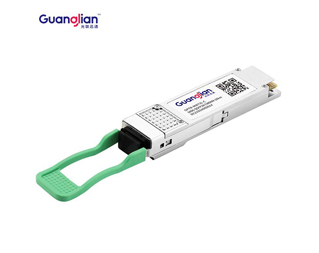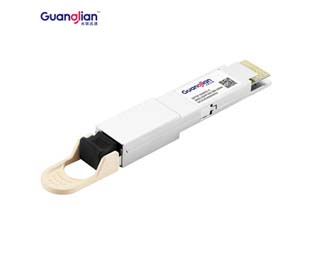Today, the momentum of optical modules is unstoppable, with 100G optical modules taking up most of the market share, such as 100G CFP and QSFP28. So 100G CFP vs QSFP28, what are the differences and how to choose? This article will detail CFP and QSFP28 and the specific applications they cover.
For the differences between 100G CFP and QSFP28, this article will introduce them in terms of definition, power consumption, port density, cost and applications.
CFP is a multi-source agreement (MSA) used to define the form factor of an optical transceiver for high-speed digital signal transmission. the electrical connection of CFP uses 10x 10 Gbit/s channels in each direction (RX, TX). At the same time, the fibre connection can support 10x 10 Gbit/s and 4x 25 Gbit/s variants of 100 Gbit/s. 100G CFP modules offer connectivity options for a wide range of service provider transport, data centre networks and enterprise core aggregation applications.
100GBASE-QSFP28-PSM4-500m/2km Optical Transceiver Module
The QSFP28 transceiver module integrates four transmit and four receive channels. The "28" indicates that each channel carries data rates of up to 28G. The QSFP28 can be used for 4x 25G breakout connections or 1x 100G connections, depending on the transceiver used. For example, you can use a 100G QSFP28 to 4 SFP28 DAC cable for 4x 25G branch connections and an LC interface-based QSFP28 with single-mode fibre (or an MTP/MPO interface-based QSFP28 transceiver with a 12-cell MTP/MPO patch cable) for 1x 100G connections directly.
Considering the budget, network configuration and overall bandwidth capability, power consumption plays an important role in transceiver hardware decisions. QSFP28 optical modules typically consume less than 3.5W, while other 100G optical modules consume between 6W and 24W.
The QSFP28 is the smallest 100G transceiver on the market in terms of size. the CFP4 is only a quarter of the width of the first generation CFP. However, it is still around 66% larger than the QSFP28 in terms of package form factor. This size difference indicates that the QSFP28 is much more efficient in terms of port utilisation than the CFP.
Considering power consumption and port density, it is cheaper to use QSFP28 in a system. In addition, QSFP28 is cheaper than CFP.
100GBASE-CFP2-LR4-10km Receiver Only Optical Transceiver Module
CFP is one of the recommended 100G optical modules, mainly used in metro networks and for long-distance transmission (typically 10km or more).
As for 100G CFP vs QSFP28, which one do you use to build your network? In reality, it depends on two main aspects: the type of port in your hardware device and the application scenario. the CFP modules are much larger than the QSFP28 modules. 100G QSFP28 seems to be the mainstream and is mainly used for shorter distances between switches (0-10km) or sometimes for longer distances (up to 40/80km) with QSFP28 ER4/ZR4 and Singlemode fibre. Although 100G CFP can also be used for short distances, it is more common in metropolitan area networks (MAN) and long-haul WDM transport.
Guanglian has developed a series of DPI optical modules for network security monitoring applications in optical transmission networks, which can even meet the information security requirements in 5G networks. Our technology, Our competitive advantage. Our 100G QSFP28 can solve all compatibility problems for you, contact us!
100G CFP vs QSFP28: Which One to Choose?
Jun. 11, 2022What Makes the Best Optical Transceiver Module?
May. 27, 2022200G QSFP56 Optical Module Knowledge Full Explanation
Apr. 25, 2022
100G CFP vs QSFP28: Which One to Choose?
Jun. 11, 2022
What Makes the Best Optical Transceiver Module?
May. 27, 2022Copyright ©Guanglian Xuntong Technology Group Co., Ltd. All Rights Reserved | Sitemap
